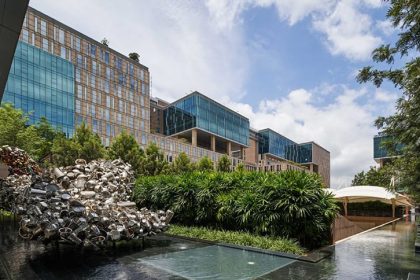Predictable conditions and steady cash flows are key elements contributing to strength in Asia Pacific’s residential real estate markets, according to speakers at the Mingtiandi Tokyo Forum. Watch the full recording>>
After third-quarter investment in APAC’s living segment shot up 304 percent year-on-year to $5 billion, according to JLL, Wednesday’s all-day event brought together senior leaders from Alyssa Partners, GreenFort Capital, Avatar Capital Partners and Arch Capital Management for a panel discussion about the ongoing transformation of the region’s housing scene.
Alyssa founder, managing partner and CEO Chedli Boujellabia said his Tokyo-based investment management firm likes the scalability, predictability and liquidity of residential properties, which are also in favour with lenders.
“So really these four major factors that you can scale, as well as your capacity is very predictable when you stick to the middle-class residential, rental apartments in Japan, and the predictability of the income and the affordability of the debt,” Boujellabia told the audience of over 200 delegates at the Mandarin Oriental Hotel in Tokyo.
Fragmented Japanese Market
Alyssa was drawn to Japan residential because of the scale of the market and the fact that no single investor has a significant market share, said Boujellabia, whose Japan-only firm manages JPY 300 billion ($2 billion) in assets with a focus on multi-family properties in key cities.
Avatar’s Angel Li speaks during the APAC residential panel of the Mingtiandi Tokyo Forum
“So it’s quite fragmented,” he said. “As an asset class, multi-family in Japan has been an institutional asset class for nearly 25 years. Unlike other markets, all the big investors worldwide have been investing and this asset class is really tested, mature, liquid, etc.”
Adam Vaggelas, co-founder and partner at Australia’s GreenFort Capital, said he agreed with Boujellabia with regard to the stability of cash flows and the resilience of residential as an asset class.
“It’s very much a needs-based type of investment, and I think that became very apparent in the aftermath of the COVID pandemic,” said Vaggelas, whose Brisbane-based firm teamed with Hong Kong’s Gaw Capital Partners to provide land lease communities for Australia’s growing senior population. “A lot of investors, particularly in the Asia Pacific region, are underweight living sector investments. And so we’ve seen a real re-rating away from more traditional asset classes, particularly in the Asia Pacific region, into the living sector.”
In Australia, where population growth rates are some of the highest in the developed world, housing vacancy nationwide sits at a 20-year low of 1.2 percent while building approvals are at 10-year lows, according to Vaggelas.
“So we have a severe housing shortage in the Australian market, and that is getting worse, year on year,” he said. “So I think there’s strong demand and appetite from both policymakers and from capital to try and help fill that void in the Australian markets.”
Coke Index Sends Signal
Avatar founding partner Angel Li, whose firm closed its inaugural fund this year with JPY 15.2 billion in committed capital, said she’s been seeing 8 percent rent growth in Avatar’s Japan multi-family portfolio as inflation appears.
Hong Kong-based Li said she observed that a vending-machine Coca-Cola which cost JPY 120 a year ago now runs to JPY 160.
“So to you guys, 40 yen is nominal,” she told the forum audience. “It’s not even noticeable, but it’s actually our proof that inflation has kicked in for more than like 25 percent.”
Arch Capital managing director Terence Lo said his Manulife-backed firm has also seen rent growth ranging from 8 to 14 percent across the Japanese portfolio.
“We’ve been a fan of residential since our inception, since 2006,” Lo said. “We built 30,000 homes across the region. And I think that in the markets that we operate in, such as Hong Kong and Japan, there is a larger propensity to rent, simply because homeownership rates are so low, where I believe in Tokyo itself is about 45 percent, in Hong Kong as well, below 50 percent.”
A Panel in Pictures











